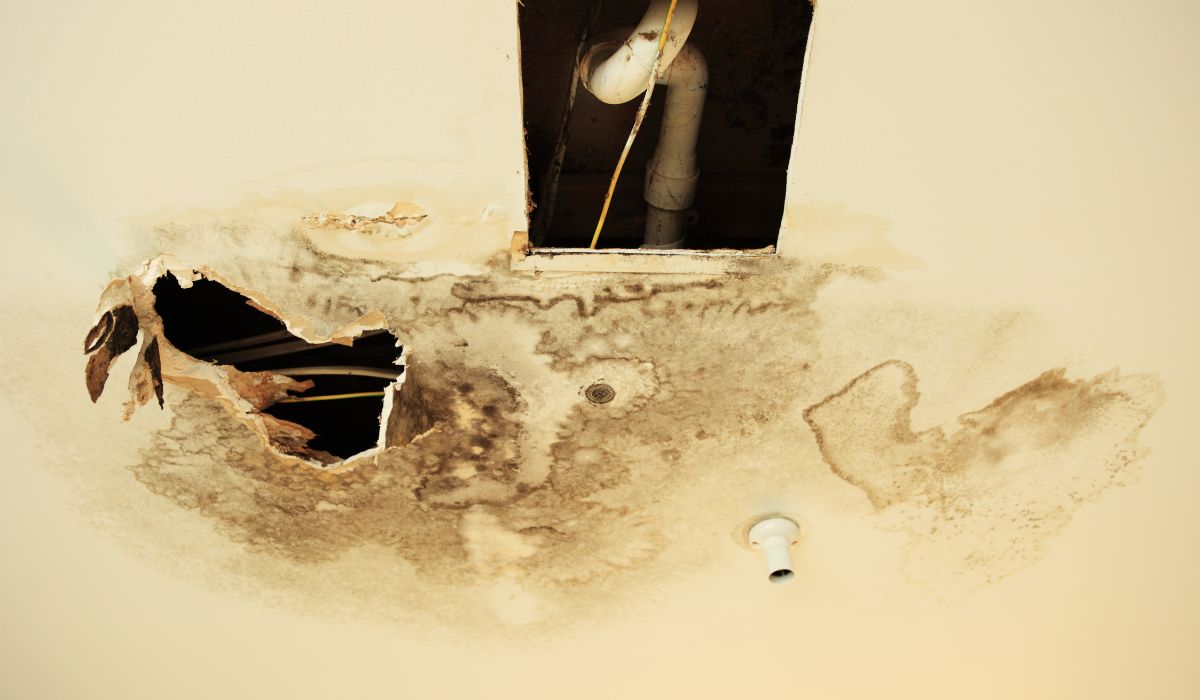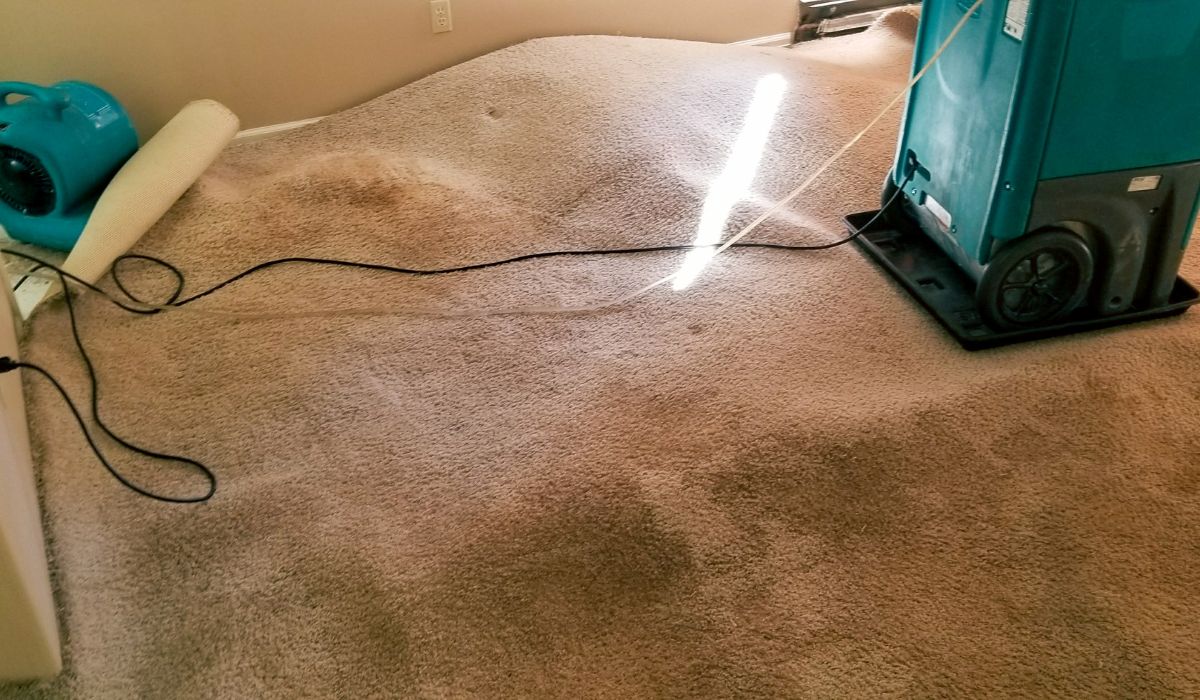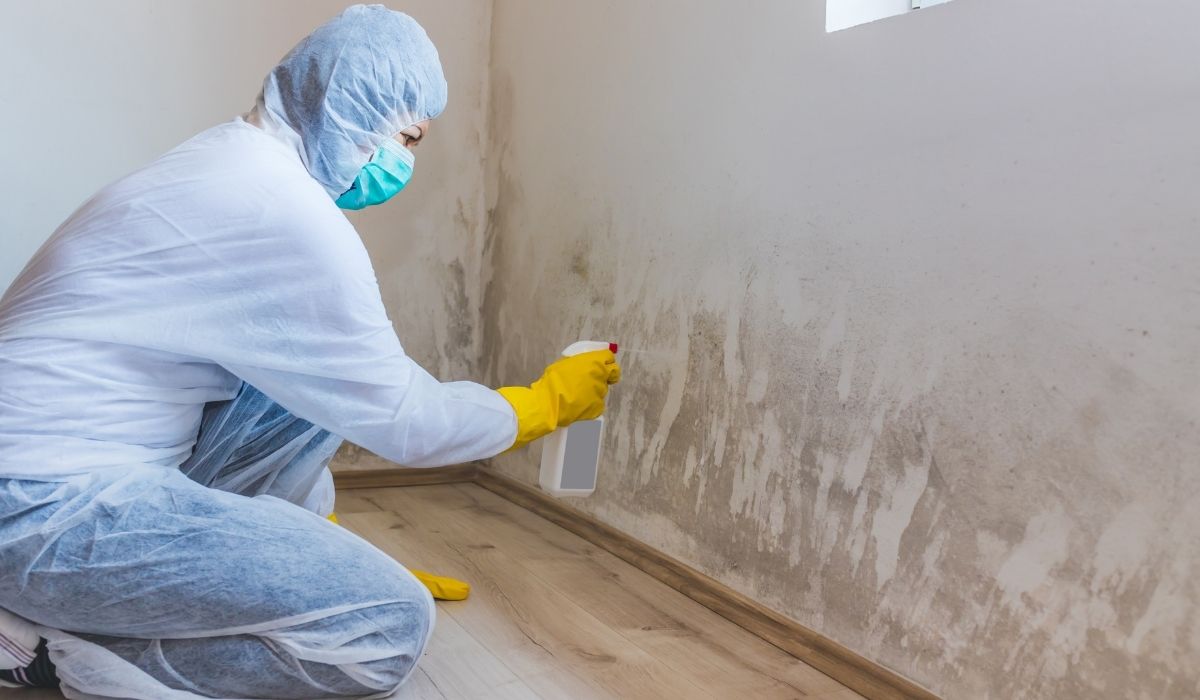What Should I Do First With Water Damage at Home
Water damage can happen to anyone. It may come from a leak in the roof, a broken pipe, a washing machine, or even a flood from heavy rain. A small drip can turn into big damages if left untreated. In serious cases, flood water, sewage, or a burst valve can create a flooded home.
Knowing what to do first is important to keep your family safe and to prevent more damage. Quick steps can lower the risk of mold, mildew, structural damage, and costly water damage repair.

Step 1: Put Safety First
When you find water inside your home, safety comes before anything else.
- Turn off electricity: Shut off the circuit breaker if flooding has reached the floor or electrical outlets.
- Stop the water supply: If a pipe or toilet is leaking, shut off the main valve. This helps stop more water from entering your home.
- Check for hazards: Flood water may carry dirt, sewage, or chemicals. Avoid walking in it without protection.
Wearing gloves, boots, and even a mask can help you stay safe. Safety gear is especially important when cleaning, drying, and handling debris.
Step 2: Find the Water Source
Before you can fix the water damage, you need to know where the water is coming from.
- Plumbing leaks: Check sinks, toilets, showers, dishwashers, and washing machines.
- Roof leaks: Look at the ceiling, attic, and roof for dripping or wet spots.
- Natural disasters: Flooding or heavy rain may bring flood water inside through cracks, poor drainage, or basement windows.
Using leak detection tools or a moisture meter can help spot hidden moisture inside walls, drywall, or wood flooring.
Step 3: Call Your Insurance Company
If your home has serious water damage, call your insurance company as soon as possible.
- Homeowners insurance may cover some water damages, like a burst pipe or broken appliance.
- Flood insurance through the National Flood Insurance Program (NFIP) may cover flood damage from natural causes.
Your insurance company may send an expert to do an inspection. Take photos, videos, and make an inventory of damaged clothing, furniture, and building material. This helps when filing your claim.
Step 4: Remove Standing Water
The faster you remove standing water, the less damage you’ll face.
- Use a pump, sump pump, or even buckets to get rid of water in your basement or other spaces.
- Towels, a wet vacuum, or a dehumidifier can help soak up smaller leaks.
- Open valves and drains to improve drainage.
Removing water quickly lowers the risk of mold, corrosion, and structural damage.
Step 5: Begin Drying and Ventilation
Once the water is gone, drying is the next step.
- Use fans to improve airflow.
- Open windows for ventilation if the weather allows.
- Run a dehumidifier to lower humidity in the air.
- Lift wet carpet, upholstery, and wood flooring to help with drying.
Drying prevents mildew, mold, and rotting wood. Using a moisture meter can confirm when building material like drywall, concrete, and hardwood are safe and dry.
Step 6: Clean and Disinfect
Water from a flood, sewage, or leaking toilet can carry germs and bacteria.
- Wash clothing, rugs, and soft items with hot water.
- Use a disinfectant or bleach solution to wipe down walls, floors, and bathroom surfaces.
- Throw away food, paper, or upholstery that cannot be cleaned.
Cleaning lowers health hazards and keeps your family safe. Always wear gloves and a mask when using bleach or other strong cleaners.
Step 7: Protect Against Mold and Mildew
Mold can start growing in just 24–48 hours after flooding. It grows fast in damp wood, drywall, and carpet.
- Keep the area dry with fans, ventilation, and dehumidifiers.
- Remove wet drywall, wood, or insulation that cannot be dried.
- Watch for musty smells or dark spots on walls, ceilings, and floors.
If you see mold spreading, you may need a professional water damage restoration company for safe removal.

Step 8: Call a Professional for Water Damage Restoration
Some jobs are too big for homeowners to handle alone. That’s when you need an expert.
A professional water damage restoration team has tools like:
- Moisture meters to find hidden damp spots.
- Industrial pumps and dehumidifiers for fast drying.
- Knowledge of building material and safe restoration.
They also check for structural damage, electrical risks, and lead paint hazards. Hiring a professional helps ensure your homeowners insurance claim goes smoothly.
Step 9: Repair and Restore the Home
Once drying and cleaning are done, it’s time for water damage repair.
- Fix broken plumbing, valves, and pipes.
- Repair the roof, ceiling, or walls that were damaged.
- Replace drywall, wood flooring, or carpet.
- Repaint with waterproof paint to seal surfaces.
Proper restoration makes your home safe, strong, and livable again.
Step 10: Prevent Future Water Damage
The best way to save money and stress is to prevent water damage before it starts.
- Install a sump pump in your basement.
- Keep gutters and drainage systems clear.
- Add waterproofing to your basement or concrete walls.
- Get regular plumbing inspections from a plumber.
- Use leak detection devices near your washing machine, dishwasher, and sink.
These steps reduce the risk of future flooding, leaking, and costly repairs.
Why Quick Action Matters
When dealing with a flooded home, every minute counts. Delays can mean:
- More moisture trapped in walls and floors.
- Higher chance of mold and mildew.
- Stronger smells, stains, and corrosion on metal.
- Bigger insurance claims and restoration costs.
Taking action right away saves money, protects your family’s health, and helps your insurance company process your claim faster.

FAQs About Water Damage at Home
What should I do first when I have water damage at home?
First, stay safe. Turn off the electrical power, stop the main water supply, and look for the source of the leak or flooding. Then call your insurance company and begin removing standing water.
How long does it take to dry out a flooded home?
It depends on the damage. With fans, ventilation, and a dehumidifier, small areas may dry in 2–3 days. Larger flood damage or soaked wood flooring may take a week or longer.
Does homeowners insurance cover water damage?
Homeowners insurance may cover sudden events like burst pipes or broken appliances. For flooding from storms, you may need separate flood insurance through the National Flood Insurance Program.
Can I clean mold myself after water damage?
Small spots of mildew can be cleaned with bleach or a disinfectant. But large areas or hidden mold behind drywall may need a professional water damage restoration company.
How can I prevent water damage in the future?
Do regular inspections, fix small leaks quickly, use sump pumps, and keep drainage clear. Adding waterproofing to basements and using leak detection tools also help prevent water damage.
Final Thoughts
Water damage is stressful, but acting fast makes a big difference. Focus first on safety, stop the water source, call your insurance company, and start drying right away. Cleaning, disinfecting, and preventing mold are key steps.
When the job is too big, call a professional water damage restoration team. They have the tools, training, and expert skills to handle even the worst flood damage.
By taking these steps, you’ll not only repair water damage but also protect your home from future flooding and leaking. Quick action today can save you from costly restoration tomorrow. Contact us today for information on how we can help or your local emergency number.



